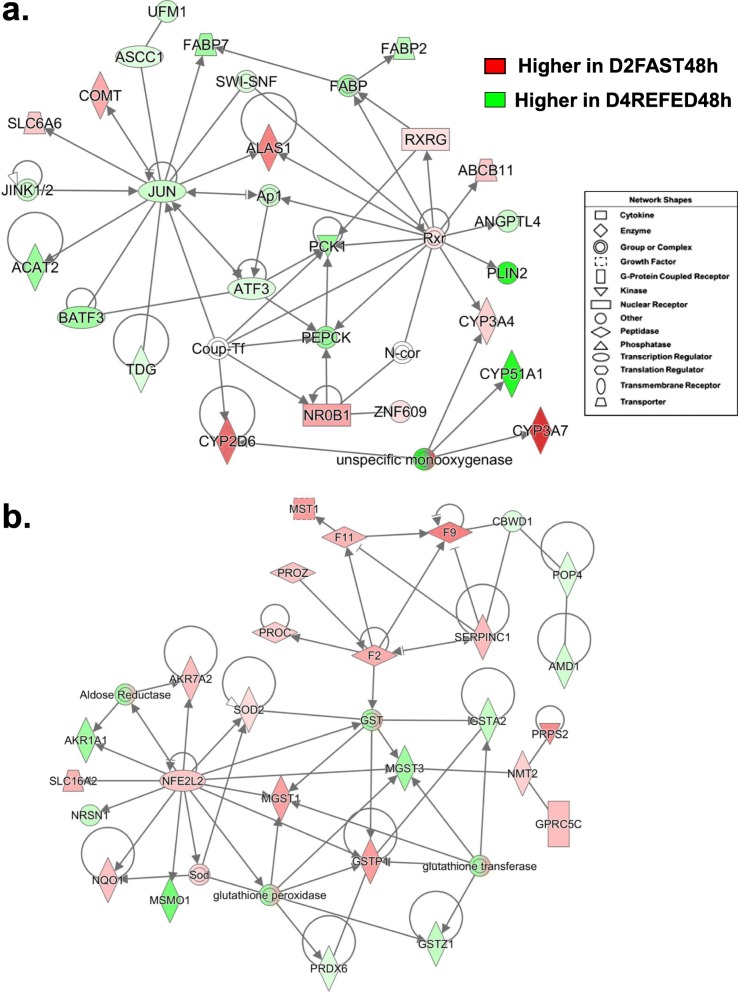Fig. 10.
A gene network depicting interactions among six transcription factors (JUN, RXR, NR0B1, AFT3, BATF3 and ASCC1) and their target genes identified from the D2FAST48h vs. D4REFED48h contrast (Panel a). Nine genes in this network, annotated by IPA as “Lipid Metabolism/Molecular Transport”, were expressed higher in liver of chicks under the D2FAST48h treatment, while 15 genes were expressed at higher levels in the D4REFED48h chicks. Ingenuity Up-stream Regulator Analysis (Panel b) predicts that Jun proto-oncogene, AP-1 transcription factor subunit (JUN) would be inhibited (blue gene symbol) and that seven of the 33 direct targets of JUN would be inhibited (blue arrows and green gene symbols), whereas only two target genes [5′-aminolevulinate synthase 1 (ALAS1) and myelin basic protein (MBP)] were predicted to be actively inhibited by JUN (blunt orange line). Another ligand-activated transcription factor, thyroid hormone-receptor beta (THRB), forms heterodimers with retinoid X receptor gamma (RXRG). Although not an AR-DEG itself, Ingenuity predicts that THRB would be inhibited which would lead to inhibition of six direct target genes (CTNNB1, ME1, PCK1, PPPCA, THRSPA and YWHAE), while two target genes (EGFR and EHHADH) would be actively blocked (blunt orange edge)

